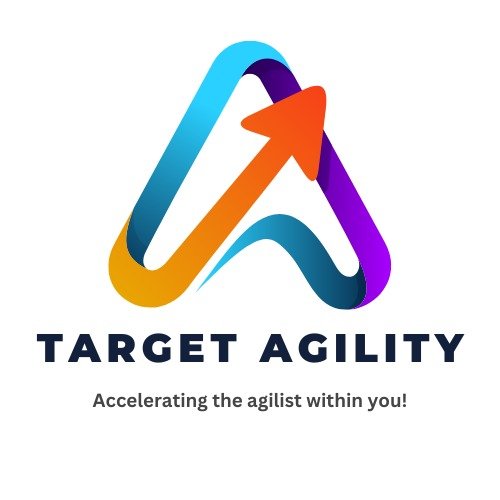Understanding Hybrid Agile Frameworks

In today’s fast-paced world of software development and project management, teams are always looking for ways to combine flexibility and structure. A popular solution is the Hybrid Agile Framework, which mixes the adaptable style of Agile with the structured approach of traditional methods like Waterfall. This blend helps teams handle diverse project needs more effectively. What Is a Hybrid Agile Framework? A Hybrid Agile Framework combines parts of Agile—like quick updates, feedback, and teamwork—with the step-by-step planning of traditional methods. It works well for projects that need detailed planning in some areas but also require flexibility in others. For instance, a software project might use Waterfall to plan and design everything in detail at the start and then switch to Agile for development and testing to adapt to feedback and make changes quickly. Why Use a Hybrid Agile Framework? Organizations choose Hybrid Agile for many reasons: Key Features of a Hybrid Agile Framework How to Implement a Hybrid Agile Framework Here are steps to make the transition to Hybrid Agile smoother: Benefits of Hybrid Agile Frameworks Challenges and Solutions Real-World Examples of Hybrid Agile Frameworks Many industries use hybrid methods successfully, such as: Conclusion The Hybrid Agile Framework offers a practical way to manage projects by combining structure with adaptability. This approach helps organizations handle different project demands, reduce risks, and achieve better results. While it takes effort to set up and align teams, the benefits make it worth it. Hybrid Agile provides a scalable and efficient way to deliver value in today’s dynamic work environment.
Simplifying SAFe® DevOps

In today’s fast-moving world, businesses need to deliver high-quality software quickly. To make this happen, teams must work together better and streamline their processes. SAFe® DevOps provides a clear way to connect development (Dev) and operations (Ops) teams, helping them deliver software faster, more efficiently, and with fewer issues. What is SAFe DevOps? SAFe DevOps is a part of the Scaled Agile Framework® (SAFe), designed to bring development and operations teams together. It focuses on improving teamwork, automating processes, and speeding up how software moves from an idea to a finished product. The goal is to break down barriers between teams and ensure everyone works toward delivering value to customers. Key Features of SAFe DevOps Benefits of SAFe DevOps How to Start with SAFe DevOps Challenges in SAFe DevOps Switching to SAFe DevOps isn’t always easy. Teams might resist change, silos can be hard to break, and automating old systems can be tricky. However, with good leadership, training, and a focus on continuous improvement, these challenges can be overcome. Conclusion SAFe DevOps combines the agility of DevOps with the scalability of SAFe, making it perfect for large organizations. It helps teams work together better, deliver software faster, and respond quickly to customer needs. By adopting SAFe DevOps, businesses can stay competitive and deliver value efficiently in today’s fast-paced world.
Why Emotional Intelligence is Essential for Agile Leaders

In today’s fast-changing world, agile leaders play a key role in helping teams adapt, innovate, and succeed. While technical skills and strategic thinking are important, emotional intelligence (EI) is what truly sets great agile leaders apart. EI helps leaders understand and manage emotions—their own and others’—to build strong relationships and create positive team environments. What is Emotional Intelligence? Emotional intelligence, or EQ, is the ability to recognize and control emotions and handle relationships effectively. It includes five main skills: self-awareness, self-control, motivation, empathy, and good social skills. These abilities align perfectly with agile leadership, where collaboration, adaptability, and communication are essential. Why Agile Leaders Need Emotional Intelligence 1. Building Trust and Safe Spaces Trust is critical in agile teams. When team members feel safe to share ideas or voice concerns, they work better together. Leaders with emotional intelligence create this trust by being self-aware of their actions and empathetic to others’ feelings. This makes team members feel valued, encouraging creativity and teamwork. When people trust their leader, they’re more open to trying new things without fear of failure. 2. Handling Change and Uncertainty Agile environments are full of change. Leaders with strong EI stay calm and focused during uncertainty, thanks to their ability to regulate their emotions. They also understand their team’s concerns and provide encouragement, helping everyone stay positive and focused on solutions. This stability allows teams to adapt and overcome challenges more effectively. 3. Improving Team Collaboration Collaboration is at the heart of agility, and emotionally intelligent leaders excel at bringing people together. With strong communication and conflict resolution skills, they ensure teams work in harmony. By listening to everyone and valuing different viewpoints, these leaders create an inclusive environment where every voice matters. This boosts creativity and leads to better ideas and solutions. 4. Encouraging Feedback and Growth Continuous improvement is a key part of agile practices, and feedback is vital for growth. Leaders with high emotional intelligence know how to give feedback in a constructive and motivating way. Self-awareness helps them avoid being overly critical, while empathy ensures they deliver feedback thoughtfully. This approach makes team members more open to learning and improving, benefiting the entire team. 5. Boosting Motivation and Engagement Engaged and motivated teams perform better. Agile leaders with strong EI know what drives their team members and help connect their goals with the organization’s vision. By showing empathy and communicating clearly, they create a sense of purpose and excitement about the work. This not only improves productivity but also makes the workplace more enjoyable for everyone. How to Build Emotional Intelligence The good news is that emotional intelligence can be learned and developed. Here are some ways agile leaders can improve their EI: Conclusion Emotional intelligence is a must-have skill for agile leaders. It helps them build trust, handle change, and foster collaboration, creating a strong foundation for team success. By improving their EI, leaders can create positive environments where teams thrive, adapt, and achieve great results together.
Best Agile Tools for Your Team in 2024

Agile is a way of working that helps teams be flexible and efficient. To make Agile work smoothly, teams use special tools. These tools help them plan, track, and work together on projects. What to Look For in an Agile Tool When choosing a tool, think about: Top Agile Tools to Consider Here are some of the best Agile tools: Choosing the Right Tool To choose the best tool, consider: By carefully considering these factors, you can find the best tool to help your team work efficiently and deliver great results.
Key Metrics Every Agile Team Should Track

In Agile development, tracking the right metrics is crucial for success. It helps teams work more efficiently, improve their processes, and deliver high-quality products. However, focusing on too many metrics can be confusing and unproductive. To keep things simple and effective, here are some key metrics every Agile team should monitor to improve their performance and deliver value consistently. 1. Velocity What It Is: Velocity shows how much work a team completes during a sprint, usually measured in story points, hours, or completed tasks. Why It Matters: It helps teams plan future sprints and understand their capacity. Over time, it shows patterns in performance and helps identify issues. Tip: Don’t use velocity to compare teams, as different teams estimate work differently. Use it for your own team’s planning and improvement. 2. Sprint Burndown Chart What It Is: A visual chart that tracks how much work is left in a sprint over time. Why It Matters: It helps teams see if they are on track to finish their sprint goals and spot problems early. Tip: If progress is slower than expected, check for reasons like underestimated tasks or blockers, and adjust your plans to stay on track. 3. Lead Time What It Is: The total time from when a task is created to when it’s completed. Why It Matters: Short lead times mean faster delivery, which is crucial for staying competitive. Tip: If lead time is too long, find delays in the process, like long reviews or waiting times, and fix them. 4. Cycle Time What It Is: The time it takes from starting a task to finishing it. Why It Matters: Shorter cycle times mean tasks move faster through the workflow, helping the team deliver more quickly. Tip: Break down cycle time by task types (e.g., features or bugs) to find areas needing improvement. 5. Cumulative Flow Diagram (CFD) What It Is: A chart showing the progress of tasks through different workflow stages over time. Why It Matters: It helps teams spot bottlenecks and keep work moving smoothly. Tip: If one stage has more tasks piling up than others, that’s a sign of a bottleneck. For example, if tasks are stuck in the “In Review” stage, it may mean reviews are slowing things down. 6. Defect Density What It Is: The number of defects found per unit of work, like per sprint or user story. Why It Matters: It helps teams track product quality. A higher defect rate could mean problems with coding, testing, or unclear requirements. Tip: If defect density rises, do a root cause analysis to fix the underlying issue, whether it’s in development, testing, or requirements gathering. 7. Team Happiness & Satisfaction What It Is: How satisfied and motivated team members feel about their work environment and processes. Why It Matters: Happy teams perform better. Tracking this helps prevent burnout and improve communication and teamwork. Tip: Use surveys, retrospectives, or one-on-one meetings to gauge and improve team morale. 8. Release Frequency What It Is: How often new features, updates, or fixes are delivered to users. Why It Matters: Frequent releases allow for quicker feedback and faster adaptation to changes. Tip: Use automated deployment pipelines and continuous integration to release more often without sacrificing quality. 9. Work in Progress (WIP) Limits What It Is: The maximum number of tasks allowed in a stage of the workflow at one time. Why It Matters: Limiting WIP helps teams stay focused, avoid overload, and improve the flow of tasks. Tip: Regularly review and adjust WIP limits based on the team’s capacity and needs. Conclusion Tracking these key metrics helps Agile teams work more efficiently, deliver better results, and continuously improve. By focusing on metrics like velocity, lead time, cycle time, and team satisfaction, teams can stay organized, adapt quickly, and maintain a high level of performance. The key is to use these metrics as tools for guidance, not as rigid rules, and to always focus on delivering value.
Challenges of Scaling Agile and How to Overcome Them

Agile has changed how teams work by encouraging flexibility, collaboration, and continuous improvement. While it works great for small teams, applying Agile across a large organization can be challenging. Scaling Agile requires more than just using Agile practices—it needs a change in mindset, processes, and coordination across different teams. Here are some common challenges and tips on how to handle them. 1. Cultural Resistance One of the main obstacles is the company’s culture. Traditional businesses often follow strict hierarchies and processes that don’t fit well with Agile’s focus on teamwork, transparency, and flexibility. How to Overcome: 2. Inconsistent Practices Between Teams Different teams may adopt different Agile methods—some use Scrum, others Kanban—causing confusion and inefficiency across the organization. How to Overcome: 3. Communication and Coordination Problems When Agile expands to multiple teams, communication can become tricky. Miscommunication and a lack of visibility across teams can slow down progress. How to Overcome: 4. Managing Dependencies and Priorities As more teams get involved, dependencies between tasks can pile up, making it hard to prioritize and deliver work efficiently. Teams might get stuck waiting for others, causing delays. How to Overcome: 5. Resistance to Change Some people might resist Agile because they fear losing control or are unsure about the new way of working. This resistance can come from managers or other key stakeholders. How to Overcome: 6. Measuring Success Traditional metrics like hours worked or tasks completed don’t show how well Agile teams are performing. Without the right metrics, it’s hard to know if things are improving. How to Overcome: Conclusion Scaling Agile is not always easy, but it can bring huge benefits if done right. By addressing cultural resistance, standardizing practices, improving communication, managing dependencies, and using the right metrics, organizations can successfully expand Agile across their teams. The key is to stay flexible, encourage collaboration, and keep improving. With the right approach and dedication, Agile can drive innovation and help businesses succeed on a larger scale.
What is Scrum? A Simple Guide for Beginners

Scrum is a popular way for teams to work together on projects, especially when things can get complicated. Originally created for software development, it’s now used in many fields like marketing, design, and even construction. Scrum helps teams work faster, stay organized, and deliver results step by step. The name “Scrum” comes from rugby, where players huddle together to move the ball forward. In the same way, Scrum teams collaborate closely to reach their goals. How Does Scrum Work? Scrum breaks big projects into smaller tasks that can be done in short periods of time, called Sprints. This helps teams stay focused and adjust quickly when things change. Key Ideas of Scrum Scrum Roles: Who Does What? Scrum Tools (Artifacts) Scrum Meetings (Events) Why Use Scrum? Conclusion Scrum is a simple yet powerful way for teams to work together, especially on complex projects. By breaking work into smaller chunks, staying in constant communication, and adapting when needed, teams can deliver better results faster. Whether you’re in software, marketing, or any other industry, Scrum can help your team stay organized and successful.
Managing Technical Debt in Agile Development

In Agile software development, technical debt is an important concept that helps teams balance speed and long-term sustainability. Agile focuses on delivering working software quickly, but technical debt highlights the costs of taking shortcuts during the development process. Let’s explore what technical debt means, its causes, impacts, and how to manage it effectively. What is Technical Debt? Technical debt refers to the extra work created when developers choose faster, less optimal solutions to meet immediate needs. Like financial debt, it grows over time, requiring more effort and resources to fix. Ignoring it can lead to bigger problems later. Types of Technical Debt There are several types of technical debt, including: Causes of Technical Debt in Agile Many factors contribute to technical debt in Agile projects. The focus on delivering software quickly can lead to rushed decisions. Changing requirements can force teams to rework code, introducing inconsistencies. Skipping thorough code reviews, neglecting documentation, and having poor testing processes can all add to the debt. Impacts of Technical Debt If left unchecked, technical debt can slow down projects and harm team productivity. Developers may spend more time fixing issues instead of building new features. This increases costs and can lead to bugs or poor performance. Over time, frustration with messy code can lower team morale. Managing Technical Debt in Agile To keep technical debt under control, teams can take a few key steps: Balancing Innovation and Maintenance Technical debt isn’t always bad—it can be a useful tool for meeting deadlines. However, managing it effectively ensures it doesn’t grow out of control. By addressing technical debt as part of the Agile process, teams can deliver innovative solutions without compromising on long-term success. In summary, technical debt is a normal part of software development. When teams understand its causes and plan for it, they can balance speed and sustainability, ensuring their projects stay efficient and their code stays manageable.
Agile Failures: What Goes Wrong and How to Fix It

Agile is known for improving teamwork, speeding up delivery, and helping organizations adapt to change. However, not every Agile transformation succeeds. Many real-life failures offer important lessons about what went wrong and how to fix it. Misunderstanding Agile Principles One common issue is adopting Agile practices, like daily stand-ups or sprints, without understanding their purpose. Teams often follow these rituals mechanically without truly embracing agility. This is sometimes called “Zombie Agile.” How to Fix It:Teach teams and leaders about the Agile Manifesto and its principles. Agile is about delivering value, responding to change, and working closely with customers. Adapt the framework to fit your team’s needs instead of treating it as a strict set of rules. Top-Down Agile Implementations Agile often fails when leaders force it on teams without their input. Processes and tools are imposed, leading to frustration and resistance. How to Fix It:Include teams in the decision-making process. Let them take ownership of Agile practices and create space for open feedback. Leaders should guide and support, not micromanage. Collaboration and transparency are essential for Agile to work. Lack of a Cultural Shift Agile can’t thrive in a culture based on rigid hierarchies, micromanagement, or a fear of failure. If the organization’s culture doesn’t support trust and collaboration, Agile practices won’t succeed. How to Fix It:Build a culture that matches Agile values. Encourage open communication, learning from mistakes, and teamwork. Leaders should lead by example by being transparent, adaptable, and collaborative. Ignoring Technical Excellence Sometimes teams focus so much on delivering quickly that they ignore technical quality. This can lead to poorly built systems, frequent bugs, and growing technical debt. How to Fix It:Make technical excellence a priority. Use tools and methods like automated testing, continuous integration, and pair programming. Agile isn’t just about speed—it’s also about creating sustainable, high-quality work. Overloading Teams Organizations sometimes see Agile as a way to push teams to do more in less time. Unrealistic goals, too many meetings, and constant task-switching can overwhelm teams and lead to burnout. How to Fix It:Respect the team’s capacity and focus on delivering fewer, more valuable items. Measure progress through healthy team practices, not just output. A balanced workload keeps teams productive and motivated. Failing to Measure Success Without clear metrics, it’s hard to tell if Agile is working. This can cause teams to lose focus and stakeholders to lose confidence. How to Fix It:Define success with clear goals, like faster delivery times, better customer feedback, or increased ROI. Track these metrics regularly to identify what’s working and where to improve. Not Adapting to Change Ironically, some Agile teams struggle to adapt. They stick rigidly to their plans even when customer needs or market conditions change. How to Fix It:Encourage teams to re-evaluate and adjust their plans regularly. Product owners should actively gather feedback and update priorities. Flexibility is a key part of Agile—use it to respond effectively to change. Conclusion Agile often fails because teams lose sight of its core principles. Focusing too much on processes and tools, without addressing teamwork and adaptability, leads to problems. However, every failure offers a chance to learn and improve. Agile isn’t a quick fix—it’s a mindset. With the right approach, even setbacks can pave the way for success.
How to Write Effective User Stories That Drive Value

User stories are an essential part of Agile development. They help teams focus on creating features that deliver real value to users.
What Are the Weaknesses of Agile, and How Can You Address Them?

Agile methodology is widely praised for being flexible, fast, and focused on customer needs. However, like any approach, it has its downsides. Understanding these weaknesses and finding ways to handle them can help teams make the most of Agile while avoiding common problems. Weaknesses of Agile How to Address Agile Weaknesses 1. Balance Short-term and Long-term Goals To avoid losing sight of the big picture, teams should create a clear roadmap that connects daily tasks to long-term goals. Regularly reviewing and adjusting this roadmap can keep the project on track. 2. Build Strong Team Collaboration Invest in training to improve communication and teamwork. Regular team meetings and activities can help solve issues and build trust. Tools like Slack or Jira can also make collaboration easier. 3. Manage Customer Feedback Set up a process to handle customer input without overloading the team. Prioritize changes based on what’s realistic and what aligns with project goals. A product owner can help filter and organize feedback. 4. Scale Agile with Frameworks Use scaling frameworks like SAFe (Scaled Agile Framework) or LeSS (Large-Scale Scrum) to coordinate work across multiple teams. These frameworks provide tools and practices to manage larger projects effectively. 5. Improve Documentation Even in Agile, some documentation is important. Keep it simple and focused—like clear user stories or diagrams—to make handoffs and maintenance smoother. Tools like Confluence can help teams maintain lightweight but useful documentation. 6. Overcome Resistance to Change Educate leaders and team members about Agile and its benefits. Training sessions, sharing quick wins, and highlighting successful case studies can encourage people to embrace the change. 7. Use Agile for the Right Projects Not every project suits Agile. Evaluate the project’s needs before choosing this approach. For strict or heavily regulated projects, consider mixing Agile with traditional methods for better results. Conclusion Agile is powerful but not perfect. By understanding its weaknesses and proactively addressing them, teams can work more effectively. The key is balance—between short-term flexibility and long-term strategy, customer needs and team priorities, and agility and structure. With the right approach, Agile can help teams deliver great results without falling into common traps.
Challenges Faced by Scrum Masters and How to Tackle Them

A Scrum Master has a big job guiding teams through Agile methods, keeping them productive, and making sure they follow Scrum rules. Even experienced Scrum Masters face challenges, but here are some common ones and ways to handle them. 1. Managing Stakeholder Expectations Scrum Masters often struggle with balancing what stakeholders want and what the team can realistically deliver. Stakeholders may push for quick results or extra features, which can overwhelm the team and lead to burnout. Solution: Open communication is key. Scrum Masters should keep stakeholders informed about the team’s capacity and show how adding extra work impacts deadlines. Using charts or data like team velocity can help stakeholders see what’s realistic. Educating stakeholders on Agile values, such as working at a sustainable pace, can also make a big difference. 2. Dealing with Resistance to Change Teams used to traditional project management may resist Agile methods, feeling uncomfortable with new roles or frequent check-ins. This can lead to skipped meetings or doubts about the Agile approach. Solution: Scrum Masters should be patient, acting as coaches. Hold workshops to explain Agile basics and show how Scrum benefits the team, such as by enabling quick feedback. Encourage the team to try new things and adapt slowly, celebrating small successes along the way to build trust in the process. 3. Ensuring Team Collaboration Sometimes team members don’t collaborate well, especially in remote teams. Miscommunication, delays, and working in silos can slow down the process. Solution: Scrum Masters can promote teamwork by organizing team-building activities and setting up clear channels for communication. Daily stand-ups and regular retrospectives help team members share updates and voice issues. For remote teams, use tools that support collaboration and establish communication guidelines. Building a supportive environment where everyone feels comfortable sharing can also boost collaboration. 4. Managing Scope Creep In Agile, flexibility can sometimes lead to “scope creep,” where extra features are added continuously. This often happens when priorities aren’t clear, putting pressure on the team. Solution: Scrum Masters should work closely with the Product Owner to keep the backlog organized and prioritize tasks based on value. Remind the team of the sprint goal and help them commit only to tasks they can complete in the sprint. For new requests, explain their impact on current work and suggest adding them to future sprints. 5. Handling Conflicting Personalities Teams are diverse, with members bringing different perspectives and working styles. Conflicts can arise, affecting teamwork and productivity. Solution: Scrum Masters should promote respect and open communication. Encourage team members to express their ideas and address conflicts openly. Private coaching sessions may also help. Setting team rules and modeling respectful behavior can guide the team toward healthier collaboration. 6. Promoting Continuous Improvement Teams can become comfortable and stop seeking improvements, which can reduce productivity over time. Solution: Scrum Masters should make retrospectives a safe, engaging space for feedback. Try different retrospective formats to keep them fresh and encourage honest reflection. Set improvement goals and check in on them in the next sprint. Supporting continuous learning and adapting based on feedback can keep the team motivated and productive. Conclusion Being a Scrum Master has challenges, from managing expectations to encouraging teamwork. But with clear communication, patience, and dedication to Agile principles, these challenges can become growth opportunities. Overcoming these obstacles helps the team work better together, adapt to change, and deliver quality results, making Agile truly effective.
Essential Skills Every Scrum Master Needs

A Scrum Master plays a key role in helping teams work well within Agile practices, especially when using Scrum. They’re not just in charge of meetings but support the whole team and organization to follow Agile principles effectively. Here are the main skills a good Scrum Master needs. 1. Facilitation and Communication Skills A Scrum Master runs meetings like sprint planning, daily stand-ups, sprint reviews, and retrospectives. They make sure these meetings are focused, organized, and productive. This means they need to guide discussions and encourage everyone to participate. Communication is essential because the Scrum Master acts as a bridge between the development team, the Product Owner, and other stakeholders. They should explain things clearly, avoid jargon, and ensure everyone is working toward the same goals. 2. Coaching and Mentoring A big part of the Scrum Master’s job is to coach and support the team. They help team members understand and use Agile principles, encouraging them to take charge of their work. Rather than giving answers directly, they guide the team with questions, helping them find solutions themselves. This approach builds a culture of learning and growth, which is important for Agile teams. 3. Conflict Resolution and Negotiation Conflicts happen in any team, and a Scrum Master should know how to resolve them positively. Whether it’s disagreements over priorities, resources, or personal differences, they need to manage conflicts calmly and fairly. This involves listening actively, showing patience, and having a problem-solving attitude. Scrum Masters also act as neutral helpers, allowing team members to express their concerns and work toward a solution together, keeping the team unified. 4. Servant Leadership Being a Scrum Master is about servant leadership—empowering the team rather than managing or controlling them. They focus on supporting the team by removing roadblocks and helping them work smoothly. A servant leader puts the team’s needs first, builds trust, and creates a safe environment. They protect the team from distractions so they can stay focused on delivering results for the customer. 5. Knowledge of Agile and Scrum While people skills are crucial, a Scrum Master also needs a solid understanding of Agile principles and the Scrum framework. They should know what each part of Scrum is for, like the product backlog, sprint backlog, and increment, and how to manage these effectively. They should be comfortable using tools like story mapping and tracking velocity to help the team make decisions. They should also adjust these practices to fit the unique needs of the team and organization. 6. Adaptability and a Focus on Improvement Adaptability is key in Agile environments. A good Scrum Master is open to change and always looking for ways to improve. They should keep learning, stay updated on new Agile ideas, and refine their own approach. By being adaptable and showing a commitment to improvement, they encourage the team to stay flexible and improve over time. In short, a Scrum Master needs a blend of skills: good communication, conflict resolution, a deep understanding of Agile and Scrum, and a focus on serving the team. By mastering these skills, Scrum Masters can help the team work together effectively, deliver quality results, and create real value for the organization and its customers.
8 Simple Ways to Make Your Daily Scrum Fun and Engaging

Daily Scrums can sometimes feel repetitive and lose their energy, making it hard for team members to stay engaged. But with a few changes, you can make these meetings something people look forward to. Here’s how to add some fun, variety, and value to your Daily Scrum: 1. Switch Up the Setting and Style If you’re always meeting in the same spot, try switching it up! Change locations, try a virtual background, or even go outside. For a fresh twist, do a “walking stand-up” where everyone moves around as they talk. Changing the environment or style brings new energy and keeps things from feeling stale. 2. Rotate the Leader Having the same person (often the Scrum Master) lead each time can get repetitive. Let team members take turns leading the Scrum. This keeps things fresh and gives everyone a sense of ownership. Plus, different leaders bring different styles and ideas, making each meeting unique. 3. Add Themes or Daily Focuses Make each day special by giving it a theme or focus. For example, Mondays could be “Problem-Solving Day,” where team members share any obstacles they’re facing. Tuesdays could be “Takeaway Day,” where each person shares a lesson learned. These small changes can help the team look forward to each day’s Scrum with new purpose. 4. Share Small Personal Updates Start each meeting with a quick personal update or a positive note from each person. A quick check-in or “what’s one small win you’ve had recently?” helps team members connect on a personal level. This brings a human touch to the meeting and strengthens team bonds. 5. Use Visuals and Stories Try using visual tools like Kanban boards, project timelines, or virtual boards to make updates more engaging. Team members can walk the group through visuals to show progress. Even better, have them frame their updates like a mini-story, starting with what they tackled yesterday and what they’re taking on today. This keeps the meeting engaging and clear. 6. Set Time Limits and Gamify To keep the meeting moving, set a timer for each person’s update. This encourages everyone to keep it brief and focused. You could also gamify it: award points when the meeting finishes on time, and celebrate with a team reward when you reach a set goal. 7. Focus on Problems, Not Just Status If the Scrum is just a checklist of what everyone did, people can lose interest. Encourage team members to share any blockers they’re facing, and have the group brainstorm quick ideas to help. If a longer discussion is needed, decide who will meet later to solve it. This keeps the Scrum focused on solving real issues rather than just giving updates. 8. Celebrate Wins and Boost Team Morale Wrap up the meeting by celebrating small wins. This can be as simple as giving kudos to someone who overcame a challenge or reached a milestone. Small celebrations create a positive atmosphere and keep everyone motivated. These simple changes can make your Daily Scrums more enjoyable, focused, and valuable. By keeping things fresh and centered on collaboration, you’ll help your team look forward to each day’s work with renewed energy.
An Introduction to Jira: Powerful Project Management Tool

Jira is a project management and issue-tracking software made by Atlassian. It started as a tool for managing bugs and issues in software development but has since grown into a versatile platform for handling many types of projects, from software development to marketing and HR. Jira helps teams plan, track, and complete projects more efficiently, improving teamwork and productivity. Main Features of Jira Jira’s flexibility is one of its biggest strengths, thanks to its key features like issue tracking, customizable workflows, and detailed reports. Teams can create and assign various task types, like bugs, tasks, or larger items called “epics,” each of which can include details, priority levels, deadlines, and comments for smooth communication and progress tracking. One of the most popular aspects of Jira is its support for agile project management. Agile teams often use Scrum or Kanban boards, and Jira has built-in tools for both. Scrum boards help teams break projects into smaller parts, or “sprints,” to manage progress and quickly respond to changes. Kanban boards show tasks as they move through each step, making it easy to see what’s in progress and what’s next. These boards give teams a clear overview of their work at all times. Jira’s reporting tools are another strong point. It provides real-time insights into project performance with charts and reports, like burndown charts or sprint and velocity reports. These reports help teams see productivity trends, find areas for improvement, and make data-driven decisions. Larger organizations can use Jira’s dashboards for a broader view of multiple projects, which helps stakeholders stay updated on project progress across different teams. Benefits of Using Jira One of the main advantages of Jira is how customizable it is. Teams can adapt Jira to fit their exact needs, whether for software development, IT support, or marketing projects. Teams can create custom workflows, issue types, and even set up automation to save time. This adaptability ensures Jira fits the way an organization already works rather than forcing them to change their processes. Jira’s integration with other popular tools makes it even more powerful. It connects with software development tools like GitHub and Bitbucket, so developers can track code issues directly in Jira. It also integrates with communication tools like Slack, Confluence, and Microsoft Teams, which helps teams stay connected without switching between apps. Is Jira Right for Your Team? Jira works best for teams with structured project management methods, especially those using agile approaches. It’s widely used in software development but can be valuable for many industries, from finance to marketing. However, because Jira is feature-rich and customizable, it can be a bit complex for new users. For smaller teams or simpler projects, a more basic tool might be better. But for teams managing complex projects that need strong reporting and transparency, Jira is a powerful choice that can significantly improve productivity. In short, Jira is a flexible and powerful tool for managing projects, tracking tasks, and supporting agile workflows. Its customization options, detailed reporting, and integrations make it ideal for organizations looking to improve project management and team collaboration.
How to Make Daily Scrum Meetings More Interesting

Daily Scrum meetings are essential in Agile project management, helping teams stay on the same page, share updates, and adjust plans when needed. However, these meetings can sometimes become boring or feel repetitive. When this happens, people might lose focus, and the meeting may not provide as much value. So, how can we make daily Scrums more engaging and enjoyable? Here are some simple tips to keep your daily Scrum meetings interesting and productive: 1. Keep It Short and Focused A daily Scrum should be quick and to the point—no more than 15 minutes. If it regularly takes longer, it’s likely losing the team’s attention. Stick to the core questions:What did you do yesterday? What will you do today? Do you have any blockers? Encourage brief updates and avoid lengthy discussions. Keeping the meeting short and focused ensures it remains energizing, not tiring. 2. Mix Up the Meeting Format Doing the same thing every day can get boring. Try changing how you run the meeting now and then. Changing the routine makes the meeting less predictable and keeps the team engaged. 3. Use Visual Tools Using visuals during Scrum can make the meeting more dynamic. If you’re working with digital tools like Jira, Trello, or Asana, display them on a screen and walk through the tasks. Visual aids help clarify what’s being discussed and keep everyone interested. For virtual teams, try using fun virtual backgrounds or team avatars to create a more interactive experience. 4. Celebrate Small Wins While Scrum is mostly about tracking progress and solving problems, don’t forget to celebrate achievements, no matter how small. Whether it’s finishing a task or overcoming a challenge, take a moment to recognize these wins. A simple acknowledgment or quick round of applause can lift the team’s spirits and make the meeting more enjoyable. 5. Rotate the Scrum Master Role Let different team members take turns leading the Scrum. This brings fresh perspectives and energy to the meeting. Each person might have a different style of running the meeting, which keeps things from getting stale. It also promotes a sense of shared responsibility within the team. 6. Tackle Blockers Effectively Blockers (things stopping progress) are a key part of Scrum. However, if the same blockers come up day after day without any resolution, it can frustrate the team. Make sure blockers are addressed quickly, either in the meeting or right after. This shows the team that the Scrum is a useful tool for solving problems, not just a daily task to check off. 7. Add Some Fun A little fun can go a long way in making Scrum more enjoyable. Here are some simple ideas: 8. Encourage Team Interaction Scrum shouldn’t just be about giving updates to the Scrum master. Encourage team members to talk to each other, offer help, or brainstorm ideas together during the meeting. This makes the Scrum more about teamwork and collaboration, rather than just individual status reports. Conclusion Making daily Scrum meetings interesting doesn’t require big changes. By keeping them short, using visuals, rotating roles, and adding a bit of fun, you can create a meeting that your team looks forward to. Scrum is meant to be valuable and productive, and with these small adjustments, you can make sure it benefits everyone involved.
How to Create the Perfect Scrum Board for Agile Teams

A Scrum board is a simple yet powerful tool that helps Agile teams stay organized and keep track of their work. It visually shows the progress of tasks, helping everyone stay on the same page. Whether you prefer a physical board or a digital one, setting up a Scrum board correctly can make managing tasks easier and improve team efficiency. Here’s how you can create a great Scrum board for your team. 1. Get to Know the Basic Structure of a Scrum Board A Scrum board usually has columns that represent the different stages of work. These columns typically include: You can customize these columns to fit your team’s process. For example, if you often have tasks that get blocked, you can add a “Blocked” column. The goal is to clearly show where each task is in the workflow, from start to finish. 2. Use Cards to Represent Tasks Each task or user story on the Scrum board is represented by a card. The card should include key details like: In digital Scrum boards, you can add more features like comments, labels, or attachments to provide more context for each task. 3. Set Limits for Work in Progress (WIP) To avoid overwhelming your team with too many tasks at once, set Work In Progress (WIP) limits. This means you limit how many tasks can be in certain columns, especially “In Progress,” at one time. This helps the team focus on finishing tasks before starting new ones, reducing distractions and bottlenecks. 4. Promote Transparency and Team Collaboration Your Scrum board should make it easy for everyone to understand the current state of tasks. Each team member should be able to see what’s being worked on and who’s responsible for what. This promotes transparency and encourages better teamwork. 5. Track Progress and Improve Over Time As your team works, gather data from the Scrum board to track progress and spot areas for improvement. You can track: By analyzing this data, you can identify ways to improve your team’s workflow. For example, if tasks are often delayed in the “In Progress” column, you might consider breaking them down into smaller steps or adjusting your WIP limits. Conclusion A well-organized Scrum board is a key tool for keeping your Agile team on track. By setting up clear columns, using detailed task cards, limiting work in progress, and promoting transparency, your Scrum board will help your team work more efficiently. Whether it’s a physical board or a digital tool, maintaining it well will ensure your team can easily manage tasks and achieve their sprint goals.
How to Connect Scrum Developers with Customers: Easy Ways to Improve Teamwork

In software development, maintaining a strong connection between the development team and the customers is crucial to ensure the product meets user needs and receives timely feedback. Scrum, a popular project management framework, emphasizes the importance of this connection, but keeping it strong can be challenging. Here are some practical ways to enhance collaboration between developers and customers in Scrum. 1. Involve Developers in Sprint Reviews A Sprint Review takes place at the end of each Sprint (typically 1-4 weeks) where the team showcases their completed work. While the Product Owner usually leads the meeting, it’s beneficial to have developers actively participate. When developers present their work directly to customers, they can: This direct engagement helps developers see the real-world impact of their work and make timely adjustments based on customer insights. 2. Invite Customers to Planning Sessions In Scrum, regular planning meetings help organize the team’s work. Involving customers in these sessions can be valuable as developers gain direct input from the people who will be using the product. By asking questions and clarifying requirements during planning, developers can avoid misunderstandings and ensure they’re working on the features that matter most to customers. 3. Encourage Regular Customer Feedback Consistent feedback from customers is vital for keeping the project aligned with their expectations. Some effective ways to gather feedback include: By receiving feedback firsthand, developers can make improvements more quickly and effectively. 4. Use Customer Personas and Journey Maps Customer personas and user journeys are helpful tools for keeping the team focused on customer needs: These tools guide developers in creating features that address real customer problems and enhance the overall user experience. 5. Enable Direct Communication Between Developers and Customers Although the Product Owner typically communicates with customers, there are times when developers need to clarify technical details. Establishing quick communication channels, such as short meetings or messaging systems, allows developers to get answers directly and quickly, reducing delays and misunderstandings. 6. Facilitate Connections Through the Product Owner The Product Owner serves as the main link between the development team and the customers. While they guide the project, they can also help facilitate direct communication when necessary, such as setting up quick discussions for resolving specific customer concerns. By promoting these direct interactions, the Product Owner ensures the team remains aligned with customer needs. 7. Incorporate Customer Feedback into Team Discussions During the Sprint Retrospective, where the team reflects on what went well and what can be improved, discussing customer feedback can be highly valuable. This keeps the team focused on delivering a product that meets user needs. Key questions might include: This process encourages continuous improvement and ensures that customer feedback remains a central part of the team’s work. Conclusion Fostering a strong connection between developers and customers is essential for building a product that truly addresses user needs. By involving developers in key meetings, encouraging direct communication, and gathering regular feedback, teams can enhance collaboration and deliver more valuable products. When developers and customers work closely, the team can respond more quickly to customer needs, resulting in a product that offers real value.
How to Maintain a Sprint Backlog: Simple Tips for Agile Teams

The Sprint Backlog is a key tool in Agile development, outlining the tasks the team plans to complete during a Sprint (a short work period, usually 1-4 weeks). Keeping the Sprint Backlog organized helps the team stay focused and on track. Here are some easy ways to maintain it effectively. 1. Make Tasks and User Stories Clear Each task or user story in the Sprint Backlog should be easy to understand and have clear criteria for completion. Everyone on the team should know exactly what the task involves and how to recognize when it’s done. This clarity helps reduce misunderstandings and keeps the team aligned. 2. Keep the Sprint Backlog Updated The Sprint Backlog should be a living document that’s updated regularly. As the team progresses or encounters challenges, the backlog may need small adjustments. Daily standup meetings are a great opportunity to: Regular updates keep the team aligned and help them adjust quickly to changes. 3. Break Big Tasks into Smaller Pieces Large tasks can overwhelm the team and make it harder to track progress. Breaking down big tasks into smaller, manageable subtasks can help. For example, instead of having “build login feature” as a single task, break it into smaller steps like: Smaller tasks make it easier to monitor progress and ensure everything gets done on time. 4. Use Visual Tools for Easy Tracking It’s important that everyone on the team can see the Sprint Backlog’s progress. Visual tools like Kanban boards or Scrum boards make it easier to track what’s done, what’s in progress, and what’s blocked. For example, a burndown chart shows how much work is left and helps the team see if they’re on track to complete everything by the end of the Sprint. 5. Stick to the Definition of Done Every task should meet the team’s agreed-upon Definition of Done (DoD). This ensures that completed work meets the same standards and avoids confusion about whether a task is truly finished. A DoD might include: Having a clear DoD ensures that everyone knows what “done” really means. 6. Limit Work in Progress It’s tempting to start many tasks at once, but this can lead to inefficiency. Setting Work In Progress (WIP) limits helps the team focus on completing tasks before starting new ones. By limiting the number of tasks in progress, the team can avoid multitasking and finish work more efficiently. 7. Review and Improve After Each Sprint At the end of each Sprint, the team should hold a Sprint Review to assess what was completed and whether the Sprint’s goals were met. A Sprint Retrospective helps the team discuss what went well and identify areas for improvement in the next Sprint. These reviews provide valuable insights into how to better manage the Sprint Backlog in future Sprints. Conclusion Maintaining a well-organized Sprint Backlog is essential for Agile teams. By clearly defining tasks, keeping the backlog up to date, using visual tools, and following the Definition of Done, teams can stay focused and deliver value consistently. A well-managed Sprint Backlog helps teams stay productive, aligned, and continuously improving.
How AI and Machine Learning Are Transforming Agile Development

The combination of Artificial Intelligence (AI) and Machine Learning (ML) with Agile development has changed how software is built, making the process faster, smarter, and more efficient. Agile, known for its flexible and iterative approach, is a great fit for using AI and ML, which helps teams make better decisions, improve workflows, and deliver high-quality software more quickly. Smarter Decision-Making AI and ML can help teams make more informed decisions by analyzing large amounts of data and finding patterns. In Agile projects, teams need to decide which tasks to prioritize, how to allocate resources, and how to manage project timelines. AI can predict which features or tasks will have the most impact, helping teams focus on the most important work. Additionally, AI can spot potential problems in a sprint, allowing teams to fix issues before they slow things down. ML models can also help predict risks in a project by analyzing past performance data. For example, AI can look at how fast a team completes work, how often they meet deadlines, and how many bugs they find, offering insights into potential delays. This helps teams address issues early on, keeping the project on track. Automating Repetitive Tasks Agile teams often deal with repetitive tasks like testing, code reviews, and finding bugs. AI and ML can automate many of these tasks, saving time and effort. For example, AI tools can automatically generate test cases, run tests, and even fix some bugs. This lets developers focus on solving more complex problems. AI can also help with code reviews by checking for coding standards and spotting issues like security risks or bad practices. This speeds up the review process, improves code quality, and helps the team avoid technical debt while ensuring that the code remains clean and functional. Better Agile Estimations Estimating how long tasks will take is one of the trickiest parts of Agile. AI and ML can improve these estimates by analyzing data from previous sprints. By learning from past projects, AI can provide more accurate predictions for how long current tasks will take, helping teams plan their work and manage resources better. For example, AI can look at how long similar tasks took in the past, adjust for factors like team capacity and complexity, and give a more realistic estimate for the work ahead. This leads to more accurate planning and fewer surprises during the sprint. Improving Agile Retrospectives Agile retrospectives are key to continuous improvement. AI can enhance these retrospectives by analyzing past performance in detail. AI tools can collect feedback, detect patterns in team behavior, and suggest areas for improvement that may not be immediately obvious. For example, if AI notices that a team’s performance dips after certain tasks, it can recommend changes to workflows or suggest better tools or training to solve the problem. AI’s insights can help teams find better ways to work together and keep improving over time. Continuous Learning and Adapting AI and ML work best in environments that support continuous learning, which is central to Agile. As AI systems work alongside Agile processes, they improve over time, learning from the team’s unique working style. This creates a positive feedback loop, where AI enhances Agile practices, and Agile teams give AI more data to improve its predictions and automation. Conclusion Incorporating AI and ML into Agile development brings many benefits, such as smarter decision-making, automation of routine tasks, better estimates, and improved retrospectives. This powerful combination helps teams build better software faster, allowing them to deliver high-quality products in less time. As more companies adopt AI and ML in Agile practices, software development will continue to evolve and become more innovative. “🚀Want to make your resume AI-proof? Get it done for just ₹99! click here.🚀”
Why Choose ICAgile: A Simple Guide to Elevating Your Agile Skills

In today’s fast-changing world, businesses are constantly seeking ways to improve and adapt. Agile methodologies have become a go-to choice for companies looking to manage projects more effectively, enhance teamwork, and deliver value faster. Among the many Agile certification options, ICAgile (International Consortium for Agile) stands out for its learner-focused and flexible approach. Here are some key reasons why ICAgile is a great choice for advancing your Agile skills and mindset. 1. Focus on Practical Learning ICAgile takes a different approach to learning compared to many other certification programs. Instead of focusing on exams and memorizing facts, ICAgile emphasizes real-world experience and deep understanding. The goal is to help people truly learn by doing, not just studying. The courses encourage hands-on practice and reflection, helping learners develop skills they can apply to actual projects. This makes ICAgile certifications more than just a piece of paper; they represent real knowledge and a genuine Agile mindset. 2. Variety of Learning Paths ICAgile offers a wide range of learning tracks tailored to different roles and needs within the Agile world. Whether you’re a project manager, a business analyst, a developer, or a leader, ICAgile has a course designed just for you. The two main paths are: Within these paths, you can choose from specializations like Agile Coaching, Team Facilitation, or Leadership. ICAgile certifications are structured to allow you to advance from beginner to expert as you grow, giving you a clear way to improve your skills over time. 3. Globally Recognized ICAgile certifications are respected worldwide. As Agile becomes more popular across industries, having a globally recognized certification can help you stand out in your career. ICAgile-certified professionals are known for not just understanding Agile principles but also for applying them effectively in their work. With training partners around the globe, ICAgile certifications are valued in many regions and industries, from tech to marketing and even HR. 4. Staying True to Agile Values ICAgile’s training programs focus on the core values and principles of the Agile Manifesto. This means that the certification is not just about using tools or following processes; it’s about understanding the human side of Agile, such as teamwork, flexibility, and delivering value. By choosing ICAgile, you’re aligning with an organization that values collaboration, adaptability, and continuous improvement. It’s not just about “doing Agile” but about “being Agile” in your mindset and approach. 5. Flexible Training Options ICAgile is known for its flexibility. Instead of having one fixed curriculum, it sets learning objectives and allows its accredited partners to create courses that meet those goals. This means you can find training that suits your industry or personal preferences. Additionally, ICAgile certifications don’t expire. Unlike other certifications that require you to retake exams or pay renewal fees, ICAgile certifications last a lifetime. This approach supports continuous learning, allowing you to focus on growing your skills instead of worrying about renewals. 6. Commitment to Continuous Improvement One of the key ideas behind ICAgile is continuous learning and improvement. Their courses encourage learners to reflect on their experiences, learn from them, and make changes as needed. This focus on growth ensures that Agile professionals can adapt to changes in their business environment and keep improving their skills. This mindset is ideal for Agile professionals who want to not only improve their processes but also drive innovation in their organizations. ICAgile helps Agile practitioners stay ahead of trends and best practices by fostering a culture of learning and improvement. Conclusion ICAgile offers a flexible, practical, and values-driven approach to Agile certification. Whether you’re just starting out or you’re already an experienced Agile practitioner, ICAgile provides a pathway to deepen your skills and adopt a lasting Agile mindset. By choosing ICAgile, you’re not just earning a certification—you’re gaining real-world knowledge and tools that will benefit both your career and your organization. “Click here to Join our ICAgile-certified course to master Agile skills and boost your career!”
What is the Benefit of CSPO Certification?

The Certified Scrum Product Owner (CSPO) certification helps professionals understand and excel in the role of a Product Owner within a Scrum team. Offered by the Scrum Alliance, this globally recognized certification is great for anyone involved in product development and management. Here are some key benefits of earning a CSPO certification: 1. Clear Understanding of the Product Owner Role The CSPO certification teaches you exactly what a Product Owner does. You’ll learn how to manage the product backlog, prioritize tasks, and work closely with different stakeholders. Since the Product Owner is responsible for delivering the right features at the right time, this certification helps you refine the skills needed to balance customer needs with business goals. 2. Better Job Opportunities Getting a CSPO certification can open up new career paths. Many companies are adopting agile frameworks, and there is a growing demand for skilled Scrum Product Owners. Having this certification on your resume shows employers that you understand Scrum and can effectively manage product development teams. This can lead to job roles in product management, project management, or business analysis. 3. Improved Team Collaboration A key part of the Product Owner’s job is to ensure good communication between the development team and stakeholders. With CSPO training, you’ll learn how to keep everyone aligned on project goals and priorities. This makes it easier to work with cross-functional teams and ensure that the product development is moving in the right direction. 4. Better Knowledge of Agile Practices As agile methods like Scrum are becoming common in many industries, CSPO certification helps you deepen your understanding of agile practices. You will learn how to apply Scrum in your organization to deliver products more efficiently. Even if you’re already familiar with Scrum, the certification will give you advanced insights into managing agile product development. 5. Higher Salary Potential Certified Scrum Product Owners often earn more than those without certification. Since the CSPO brings specialized skills to the table, companies are willing to pay a premium for certified professionals. This makes it a valuable investment if you’re looking to grow in your career and earn a higher salary. 6. Ability to Adapt to Change In today’s fast-changing business world, customer needs and market conditions can shift quickly. The CSPO certification prepares you to adapt to these changes efficiently. You’ll learn how to be flexible in adjusting priorities and guiding your team to respond quickly to new business opportunities or market trends. Conclusion The CSPO certification offers numerous benefits, from improving your job prospects to equipping you with essential skills for managing product development. It also helps you communicate better with teams and stakeholders, stay updated with agile practices, and adapt to changes in the business environment. Overall, it’s a great way to strengthen your role as a Product Owner and deliver high-value products more effectively. “Kick Start Your Journey with Our CSPO Certification Course click here.”
Why Getting a PSPO Certification is a Game-Changer in 2024

The Professional Scrum Product Owner (PSPO) certification is more important than ever in 2024, especially as businesses continue to embrace Agile methods to stay competitive. If you’re aiming to step up your product management game, the PSPO certification can open doors and boost your career in significant ways. Let’s break down why this certification is such a valuable asset today. 1. High Demand for Agile Skills In 2024, companies are relying heavily on Agile, especially Scrum, to adapt quickly and deliver products that meet customer needs. Product Owners play a crucial role in this process, making sure the right features are built and that the development team stays on track. A PSPO certification shows you understand how to do this effectively. By getting certified, you’ll have the skills to help companies deliver value faster, a trait that’s highly sought after in today’s fast-paced business world. 2. Better Career Opportunities The job market is tough, and having specialized skills can set you apart. A PSPO certification tells employers that you know how to manage products and work within Scrum teams effectively. In 2024, companies are looking for Product Owners who can not only manage backlogs but also drive business value through strategic decisions. This certification can help you land higher-paying jobs or take your career to the next level, whether that’s becoming a Product Manager or a senior leader in an Agile team. 3. Real-World Skills That Deliver Results The PSPO certification isn’t just about learning theories—it’s about practical skills you can apply right away. Companies in 2024 need Product Owners who can solve real problems, like managing priorities, working with stakeholders, and planning product releases. With PSPO training, you’ll learn how to streamline processes, increase team efficiency, and deliver products that make an impact. 4. Commitment to Continuous Learning Scrum and Agile methods are always evolving. By getting a PSPO certification, you’re showing that you’re committed to staying current with the latest trends and practices. In a world where markets and technology change quickly, this willingness to adapt is essential. Employers value professionals who are dedicated to continuous improvement, and PSPO-certified individuals are well-positioned to keep their skills sharp. 5. Global Recognition and Networking One of the great things about the PSPO certification is its global recognition. Scrum is widely used in industries like tech, healthcare, finance, and beyond. Having this certification opens up job opportunities worldwide and connects you to a global community of professionals. Through events, online forums, and networking opportunities, you’ll gain access to new ideas and experiences that can further advance your career. Conclusion In 2024, the PSPO certification is a game-changer for anyone looking to grow in product management. It provides you with practical tools, strategic thinking, and a commitment to lifelong learning that will keep you relevant in today’s ever-changing job market. Whether you’re just starting out or looking to advance, the PSPO can help you stand out and succeed. “Become a Product Leader – Join Our PSPO Course Today!”
Why Scrum Masters Are More Important Than Ever

As businesses adapt to fast changes in technology and market needs, many have turned to Agile methods to manage projects and deliver results quickly. Among the different Agile frameworks, Scrum is one of the most widely used. A key player in the Scrum process is the Scrum Master—a person responsible for helping teams work efficiently and follow Scrum practices. But with the constant changes in the workplace, one might wonder: Are Scrum Masters still in demand? The short answer is yes. Let’s take a look at why Scrum Masters continue to be important and how their role has changed over time. The Importance of Agile Agile methodologies, like Scrum, Kanban, and Lean, have become essential for delivering projects efficiently. They allow teams to work in short cycles, adapt to changes, and deliver value to customers faster. As more companies adopt Agile to stay competitive, the need for Scrum Masters grows. Scrum Masters help teams understand and follow the principles of Agile, encouraging collaboration, flexibility, and continuous improvement. What Does a Scrum Master Do? Many people think that Scrum Masters are project managers who assign tasks, but their role is actually quite different. A Scrum Master acts as a servant-leader, meaning their job is to support the team and help them succeed. Some key responsibilities include: These responsibilities highlight why Scrum Masters are so important—they help teams communicate better, collaborate efficiently, and improve their workflows, which are crucial in today’s fast-paced business world. Demand Across Different Industries While Scrum began in software development, its principles are now being used in a variety of industries, such as marketing, healthcare, finance, and more. As these industries adopt Agile, the demand for Scrum Masters has expanded beyond tech companies. Businesses in areas like manufacturing, logistics, and even government agencies are turning to Agile frameworks like Scrum to increase efficiency and deliver better results. For example, in industries like healthcare or finance, where there are strict regulations and fast-changing requirements, Agile helps teams meet goals more quickly. Scrum Masters in these sectors help teams navigate complex rules while maintaining flexibility and delivering high-quality results. How the Scrum Master Role Has Evolved As more companies adopt Agile, the role of the Scrum Master has also changed. Today’s Scrum Masters need to know more than just the basics of Scrum. In larger organizations, they may need to be familiar with scaling Agile frameworks, like Scrum@Scale, SAFe, or LeSS, which are used to manage larger teams or multiple projects at once. Additionally, the shift to remote work has changed how Scrum Masters operate. Virtual teams come with new challenges, such as ensuring effective communication across different time zones. Scrum Masters now play a key role in keeping remote teams connected and ensuring they collaborate smoothly, even when they are not in the same location. Why Scrum Masters Are Valuable Because of the wide range of tasks they handle, Scrum Masters bring significant value to organizations. They help reduce the time it takes to get products to market, improve the quality of work, and foster better teamwork. These benefits have kept Scrum Masters in demand across industries. Platforms like LinkedIn and Glassdoor consistently rank Scrum Master as a top job, especially in tech and project management fields. Conclusion: Are Scrum Masters Still Needed? Absolutely. Scrum Masters are still in high demand, and their role is becoming even more important. As more companies embrace Agile methodologies, both in technical and non-technical areas, the need for skilled Scrum Masters continues to grow. In addition, the challenges of remote work and managing larger teams make their role even more essential. If you’re thinking about becoming a Scrum Master or already working as one, you can feel confident that your skills will remain valuable for many years to come. “Ready to take your career to the next level? Join our Scrum Master course today and make it happen! Click here to get started!”
What Is a Release Train Engineer: Roles, Responsibilities, & Skills

A Release Train Engineer (RTE) plays a key role in Agile frameworks, particularly in the Scaled Agile Framework (SAFe). The RTE is like the head Scrum Master, overseeing a group of teams called the Agile Release Train (ART), which work together to deliver value consistently. The RTE’s job is to ensure that everything runs smoothly, teams stay aligned, and they meet the organization’s goals. In this blog, we’ll break down the RTE’s roles, responsibilities, and the skills they need. What Does a Release Train Engineer Do? The main job of an RTE is to make sure the Agile Release Train (ART) runs effectively. This involves helping teams stay in sync, solving issues, managing risks, and promoting collaboration. Here are some important tasks RTEs handle: Responsibilities of a Release Train Engineer An RTE’s responsibilities cover both the day-to-day operations of the Agile Release Train and the overall success of the program. Key responsibilities include: Skills Needed for a Release Train Engineer An effective Release Train Engineer needs a combination of technical knowledge, leadership, and communication skills. Some of the essential skills include: Conclusion The Release Train Engineer is essential to the success of the Agile Release Train in a SAFe setup. They ensure teams are aligned, risks are managed, and value is consistently delivered. Understanding the RTE’s roles, responsibilities, and necessary skills helps organizations run more efficient Agile processes and continuously improve their work. “Ready to kickstart your RTE journey? Click here to begin your adventure!”
How OTT Platforms Use Agile Methods to Deliver Better User Experiences

Over-The-Top (OTT) platforms like Netflix, Amazon Prime, and Disney+ have changed how we watch TV shows and movies. To keep their users happy, they need to keep up with changes in technology and what viewers want. One of the best ways to do this is by using Agile methods. Agile is an approach that helps teams work faster, be flexible, and make improvements quickly. What is Agile? Agile is a way of working that focuses on breaking big tasks into smaller, manageable parts. Teams work on these small parts in short time periods called “sprints.” After each sprint, they review their work and make changes if needed. Agile allows teams to adapt to changes quickly and improve their work continuously. For OTT platforms, this means they can respond to feedback, try new ideas, and improve the user experience regularly. How Agile Helps OTT Platforms Improve User Experience OTT platforms have to keep adding new features to stay competitive. Whether it’s improving the way users find content or fixing bugs, platforms need to work quickly. Agile allows teams to release updates in small steps, so users get new features more frequently. For example, Netflix might update how it recommends shows to users or make the interface easier to use. With Agile, they can test these changes quickly, get feedback, and make improvements without waiting too long. Agile encourages platforms to involve users in the development process. Instead of making big changes all at once, they can introduce small updates based on real user feedback. OTT platforms often test new features with a small group of users first. They gather feedback, make improvements, and roll out the changes to everyone. This way, they ensure that new updates are based on what users actually need, making the experience more personalized and user-friendly. OTT platforms use data to personalize what you see. Agile helps them experiment with how they recommend shows and movies to users. Teams can gather data, test different approaches, and see which one works best. For instance, Netflix can analyze viewing habits and adjust its recommendation system using Agile methods. This way, it continuously improves how well the platform matches users with content they’ll enjoy. Agile encourages collaboration between different teams, such as designers, developers, and marketing. Each team brings its expertise to the table, ensuring that all aspects of the platform are covered. For example, one team might focus on improving video quality, while another works on the user interface. Agile practices help them stay connected and adjust their priorities as needed, so every part of the platform works together smoothly. As OTT platforms expand to new regions or introduce new devices, they need to adapt quickly. Agile provides the flexibility to make these adjustments without disrupting the overall workflow. Teams can shift their focus based on new challenges, such as launching in a new country or supporting a new device. This flexibility ensures that OTT platforms can grow and evolve while still delivering a great user experience. Conclusion Agile methods help OTT platforms like Netflix and Amazon Prime stay on top by allowing them to make frequent improvements, respond to feedback, and stay flexible. By using Agile, these platforms can quickly add new features, improve personalization, and ensure that their service is always meeting user needs. This helps them provide a better, more enjoyable experience for their users, keeping them ahead in a competitive market.
What Does a Product Owner Do, and Why Are They Important?

In software development, the Product Owner (PO) is a key person who helps make sure the team works on the right things to bring value to the business. The role is important in Agile methods, especially in a process called Scrum. But what exactly does a Product Owner do? When do they do these tasks, and why are they so important? What Does a Product Owner Do? A Product Owner acts as a link between the business and the development team. Their job is to make sure the team focuses on the tasks that matter most. They gather information from stakeholders (people with an interest in the project), prioritize tasks, and decide what will give the most value to the product. In Scrum, the Product Owner manages a list of things the team needs to do, called the product backlog. This backlog includes features, updates, and fixes that the team will work on in future sprints (short work cycles). Key Responsibilities of a Product Owner Why Is the Product Owner So Important? Conclusion The Product Owner plays a crucial role in helping the development team deliver the right features to meet business goals and customer needs. They define the product vision, manage the product backlog, write user stories, and make real-time decisions to keep the project moving. Acting as a bridge between stakeholders and the development team, the Product Owner ensures that the team focuses on the most valuable work, making their role vital for the success of any Agile project.
How to Outsource Work with Agile Development

Outsourcing software development can be a great way for companies to tap into global talent, save costs, and speed up projects. However, combining outsourcing with Agile development, which focuses on flexibility, collaboration, and quick feedback, can be tricky. Agile usually works best with teams that communicate closely and make quick adjustments, but this can be challenging when working with an outsourced team that may be far away. With the right approach, though, outsourcing and Agile can work together smoothly. Here’s how you can outsource work successfully using Agile principles: 1. Pick the Right Partner Choosing the right outsourcing partner is crucial for Agile development. Agile thrives on strong collaboration, so you need to find a team that understands and works well with Agile methods. Look for a partner who has experience using Agile frameworks like Scrum or Kanban, and who is open to frequent communication and making changes throughout the project. Things to Consider: 2. Maintain Clear Communication In Agile development, communication is key—and this is even more important when you’re working with an outsourced team. Miscommunication can slow down the project and lead to mistakes, so you need to set up reliable ways to stay in touch. Key Steps: 3. Define the Project Scope, But Stay Flexible Agile is all about adapting to change. However, outsourcing contracts often work best when you have a clear project scope. The trick is to find a balance. You can create a flexible project scope by breaking the project into smaller pieces (sprints) and setting clear goals for each one, while leaving room for adjustments as the project moves forward. How to Achieve This: 4. Focus on Continuous Integration and Delivery Agile teams aim to release new features and updates quickly. To do this, your outsourced team should follow continuous integration (CI) and continuous delivery (CD) practices. This means regularly updating and testing the code to catch issues early and deliver features in smaller, more manageable pieces. Best Practices: 5. Build a Strong Relationship Agile development emphasizes people and teamwork. Building a strong, positive relationship with your outsourced team is just as important as using the right tools and processes. Treat your outsourced team as part of your own, and make sure they feel involved in the project’s success. Tips for Building Relationships: 6. Use Agile-Friendly Contracts Traditional outsourcing contracts often focus on fixed timelines and deliverables, but Agile projects need room to adapt. To make outsourcing work with Agile, use contracts that allow for flexibility and changes. Contract Options: Conclusion Outsourcing and Agile development can work together successfully if you pay close attention to communication, flexibility, and building strong relationships. By choosing the right partner, using clear communication tools, staying flexible with project scope, and following Agile practices like continuous delivery, you can ensure your outsourced Agile project runs smoothly and delivers great results.
Agile vs DevOps

When it comes to creating and delivering software, two popular methods are Agile and DevOps. Both help teams work better and faster, but they do it in different ways. Let’s break down what each one is and how they are different. What is Agile? Agile is a way of working that focuses on being flexible and working together as a team. Instead of trying to build the entire product all at once, Agile teams work in small steps, called sprints, which usually last 1 to 4 weeks. At the end of each sprint, they deliver a small, working part of the product. Agile also involves getting feedback from customers regularly so the team can make improvements as they go. The main idea is to make changes quickly based on what users need. The key values of Agile are: In short, Agile is all about working in small steps, delivering pieces of the product often, and being open to change. What is DevOps? DevOps is a way of working that helps teams build, test, and release software faster and more reliably. It focuses on improving the communication between two groups: the development team (the people who build the software) and the operations team (the people who manage and support the software after it’s built). The main goals of DevOps are: DevOps is about making sure the whole process— from writing code to keeping it running— is smooth and fast. How are Agile and DevOps Different? 1. What They Focus On 2. Who’s Involved 3. Work Process 4. Use of Automation 5. Getting Feedback 6. Company Culture Can Agile and DevOps Work Together? Yes! In fact, they often go hand in hand. Agile helps teams develop software quickly, while DevOps ensures that the software is released and maintained properly. For example, a team might use Agile to manage how they build software and use DevOps to manage how that software is tested, deployed, and run in real life. Together, Agile and DevOps can help teams create software faster and more reliably. Conclusion Agile and DevOps both aim to improve how software is developed and delivered, but they do it in different ways. Agile focuses on the development team, working in short cycles and delivering small updates. DevOps focuses on the whole process, from development to deployment, using automation and better teamwork between developers and operations. When combined, Agile and DevOps can help teams deliver better software faster and more efficiently.
How to Apply Agile in Business: A Simple Guide

Agile is a popular way of managing projects that helps businesses become more flexible, improve teamwork, and work more efficiently. Originally designed for software development, Agile has now spread to many industries, like marketing, finance, and operations. If you’re interested in using Agile for your business, this guide will show you how to get started step-by-step. What is Agile? Before we dive into applying Agile, it’s important to know what it is. Agile is a project management method where teams work in short cycles (called sprints) to deliver small parts of a project, instead of trying to complete everything at once. It focuses on teamwork, flexibility, and gathering customer feedback at different stages. Agile follows four key principles: Step 1: Build a Strong Team Agile depends on teamwork, so the first step is to put together a group of people with different skills and experiences. This helps get multiple perspectives and allows for quicker decision-making. For example, if you’re working on a marketing project, your team might include people from design, content, and data analysis. Everyone will work together on small tasks and share responsibilities. There are key roles in an Agile team: Step 2: Start with a Small Project Introducing Agile can be challenging, so start small. Choose a simple project that has some risk but won’t affect the business too much. This can be something like launching a new product, running a marketing campaign, or improving an internal process. Break the project into smaller tasks that can be completed in short cycles, usually two to four weeks. Each cycle, or sprint, should produce a usable result, like a new product feature or a piece of marketing content. After each sprint, get feedback, evaluate what worked and what didn’t, and use that to improve the next sprint. Step 3: Use Agile Tools Agile often relies on tools to help organize and track tasks, communicate, and manage the workflow. Some popular Agile-friendly tools include: These tools can make it easier to manage tasks and keep everyone on the same page. Step 4: Use Key Agile Practices Once you have a team and the tools, it’s time to start using Agile practices, such as: Step 5: Expand Agile to the Rest of the Business Once you’ve successfully used Agile in a small project, you can start expanding it to other teams or areas of the business, like marketing, operations, or customer service. Each department may need to adjust the process to fit their specific needs, but Agile principles can be applied everywhere. To help with scaling Agile across the business, consider using frameworks like: Step 6: Create an Agile-Friendly Culture For Agile to truly succeed, it needs to be part of the company culture. This means encouraging a mindset of flexibility, teamwork, and continuous improvement. Leadership plays a big role in promoting this culture by allowing teams to experiment, learn from mistakes, and make decisions based on data. Open communication and breaking down barriers between teams are essential for building an Agile-friendly culture. Over time, this culture will help your business respond faster to changes, come up with new ideas, and improve overall efficiency. Conclusion Applying Agile in your business is a powerful way to improve flexibility, collaboration, and results. By building the right team, starting with a small project, using the right tools, and following Agile practices, your business can adopt Agile and succeed in today’s fast-paced world. Agile helps companies stay innovative and competitive by focusing on continuous improvement and customer feedback, ensuring they’re always delivering the best possible results.
Scrum Master vs. Project Manager: What’s the Difference?

When it comes to managing projects, two roles often come up: Scrum Master and Project Manager. Both are important, but they work in different ways and have different responsibilities. Understanding what sets them apart can help you decide which one is the right fit for your project or organization. What Does a Scrum Master Do? A Scrum Master works within Agile frameworks, specifically the Scrum methodology. Agile is all about being flexible and working in small, manageable steps. The Scrum Master’s main job is to guide the team, making sure everyone is following the Scrum process and staying productive. Key Responsibilities: A Scrum Master doesn’t make decisions about the project’s budget, timeline, or scope. Instead, they focus on making sure the team works well within the Agile framework. What Does a Project Manager Do? A Project Manager is often found in more traditional project management methods like Waterfall, where projects follow a strict sequence. The Project Manager is responsible for the entire project, managing both the team and outside stakeholders. Key Responsibilities: Unlike Scrum Masters, Project Managers handle everything from start to finish, including making key decisions about timelines, resources, and the overall direction of the project. Main Differences Conclusion: Which Role is Better? Neither role is better than the other; it really depends on the type of project and how the company likes to work. A Scrum Master might be better for Agile projects that need flexibility and teamwork. On the other hand, a Project Manager might be a better fit for long-term projects that require detailed planning and strict deadlines. Both roles are valuable in their own ways, and the best choice depends on the project’s needs and goals.
Striking the Right Balance for Documentation in Agile Projects

In Agile projects, determining the right amount of documentation can be a challenge. While traditional project management methods rely on extensive paperwork, Agile emphasizes working software over comprehensive documentation. Despite this, some level of documentation remains crucial to maintain clarity and organization. The key is finding the right balance—providing enough documentation to support the team without slowing progress. 1. Understand the Purpose of Documentation Before deciding how much documentation is needed, it’s important to clarify its purpose. In Agile, documentation should serve a specific function, adding value to the project. The primary purposes of documentation are to share critical information with stakeholders and new team members, explain complex features or processes, and keep a record of important decisions for future reference. Identifying these needs helps determine which documents are essential for the project. 2. Keep Documentation Simple and Useful Agile encourages keeping documentation minimal. Instead of creating lengthy, detailed documents, the focus should be on producing short, clear ones that directly support the team’s progress. Documents should provide only the necessary information to move forward without creating unnecessary workload. This helps the team stay agile and efficient while still maintaining clarity in communication. 3. Leverage Agile-Friendly Tools The right tools can help manage documentation more effectively. Agile teams often use digital platforms like Confluence, Jira, or Google Docs to create and update documents in real time. These platforms facilitate collaboration and ensure that documentation stays current as the project evolves. By using shared workspaces, the team can easily access and update documents, ensuring they remain relevant and useful throughout the project’s lifecycle. 4. Focus on What’s Necessary In Agile, the goal is to document just enough to support the team’s needs. Instead of creating long, detailed documents that may not be used, it’s important to focus on the most critical aspects of the project. These include high-level requirements, key design decisions, and project milestones. Short user stories can often replace detailed specifications, providing a clearer, more agile way to communicate features and goals. 5. Make Documentation Part of Your Workflow To keep documentation relevant and up to date, it should be integrated into the project’s regular workflow. Rather than treating documentation as a separate task to be completed later, teams should update it throughout the project. Regularly reviewing and maintaining documents during sprint planning or retrospectives ensures they reflect the current state of the project and align with its progress. 6. Collaborate on Documentation Documentation in Agile should be a team effort. Everyone on the team should contribute to creating and updating documents to ensure that they are accurate and complete. Collaboration among developers, testers, and the Product Owner ensures that documentation reflects diverse perspectives and captures all necessary information. This collaborative approach improves the quality and usefulness of documentation while preventing any single individual from shouldering the burden. Conclusion Balancing documentation in Agile projects requires providing just enough information to be useful without slowing down the team. By keeping documentation simple, relevant, and integrated into the regular workflow, Agile teams can maintain clarity, improve communication, and stay on track without sacrificing efficiency. Thoughtful documentation becomes a valuable tool that enhances project success, rather than a burden that holds the team back.
How AI is Changing DevOps: A Simple Guide

Artificial Intelligence (AI) is making big changes in many areas, including software development, where it’s transforming DevOps. DevOps combines development and operations to make software delivery and infrastructure management smoother. AI is helping DevOps teams by making processes smarter, predicting problems, and improving decision-making. Here’s a look at how AI is reshaping DevOps and the future of software development. 1. Boosting Automation Automation is a key part of DevOps, and AI makes it even better. While traditional automation tools follow set rules, AI can learn from data and adapt its actions. For example, AI can automate routine tasks like deploying code, setting up infrastructure, and configuring environments more accurately. By analyzing past data, AI can suggest the best setups and handle complex tasks that were once manual, reducing human error and increasing efficiency. 2. Predicting and Preventing Problems AI’s ability to predict and prevent issues is one of its biggest benefits in DevOps. AI can look at data from system logs, performance metrics, and user feedback to find patterns and spot potential problems before they happen. This allows teams to fix issues before they affect users, reducing downtime and making systems more reliable. 3. Smarter Monitoring and Analytics AI improves monitoring and analytics by giving deeper insights into how systems are performing. Traditional tools can generate a lot of data that’s hard to interpret. AI-powered tools can sift through this data, spot trends, and provide useful insights in real time. For example, AI can identify unusual behavior or performance drops that might be missed by traditional tools and suggest fixes. 4. Faster Incident Management AI helps manage incidents more effectively by quickly identifying and resolving issues. When a problem occurs, AI can analyze the data to find the root cause faster than manual methods. It can also automate the solution process, which speeds up resolution, reduces impact on users, and allows DevOps teams to focus on other important tasks. 5. Better Resource Management AI also improves resource management by optimizing how resources are allocated and scaled. It can analyze usage patterns and predict future needs, adjusting resources in real time based on current demands. This helps ensure that applications have the resources they need while avoiding excess costs and making cloud infrastructure more efficient. 6. Stronger Security Security is crucial in DevOps, and AI enhances it by spotting vulnerabilities and threats more effectively. AI security tools analyze network traffic, user behavior, and system access to detect suspicious activities. By constantly learning about new threats, AI provides better security measures and helps DevOps teams respond quickly to potential dangers. Conclusion AI is transforming DevOps by improving automation, predicting and preventing problems, enhancing monitoring, optimizing resources, and boosting security. As AI technology advances, it will continue to drive improvements in efficiency and performance in DevOps. By using AI, DevOps teams can streamline their work, reduce risks, and deliver software faster, leading to a more agile and effective development process. AI is a key player in the future of DevOps, making it smarter and more efficient.

